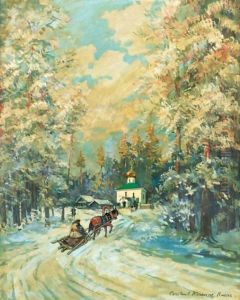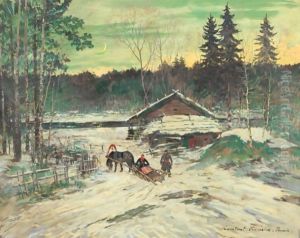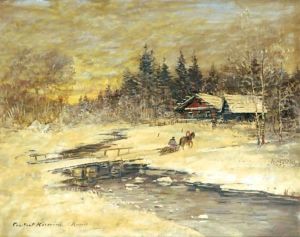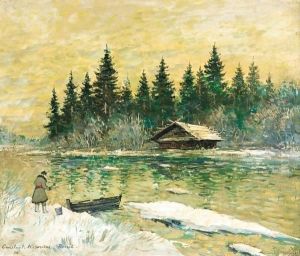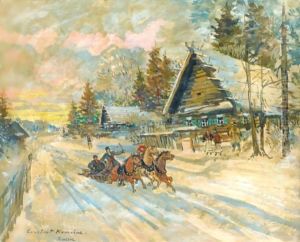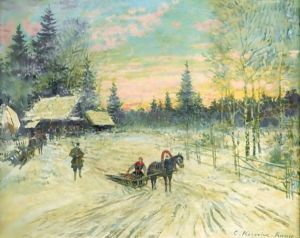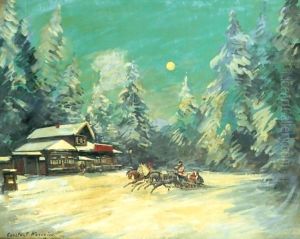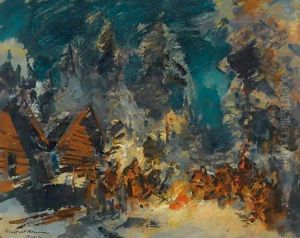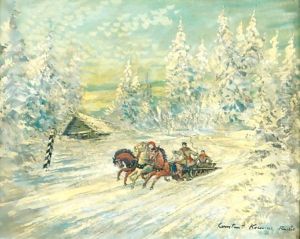Konstantin Alexeevich Korovine Paintings
Konstantin Alexeevich Korovine was a notable Russian impressionist painter and stage designer, recognized for his vibrant and lively painting style. Born on December 5, 1861, in Moscow, he was initially educated at the Moscow School of Painting, Sculpture and Architecture. There, Korovine was heavily influenced by his older brother, Sergey Korovin, who was also a talented artist, and his teachers, Vasily Perov and Alexei Savrasov.
Korovine's early works were mainly landscapes, reflecting the Russian countryside and its quaint provincial towns. His approach to painting was influenced by the Impressionist movement, which he was exposed to during his travels to Paris and Spain in the 1880s. The influence of French Impressionists like Claude Monet is evident in his use of color and his attempts to capture the fleeting effects of light and atmosphere.
In the 1890s, Korovine became associated with the Abramtsevo Colony, an artistic community that played a significant role in the development of Russian art. Here, he became friends with Valentin Serov, Mikhail Vrubel, and Ilya Repin, among others. He also began his career as a stage designer, which became one of his primary activities. Working for the private opera of Savva Mamontov, Korovine designed sets and costumes that were celebrated for their expressiveness and innovation.
Korovine's career as a stage designer reached its peak during his work with the Russian impresario Sergey Diaghilev. He designed sets for Diaghilev's famous Ballets Russes, contributing to the company's avant-garde productions that had a lasting impact on ballet and stage design. In addition to his stage work, Korovine continued to paint, creating numerous landscapes, cityscapes, and portraits. His later years were spent in Paris, where he continued to work and exhibit his art.
Konstantin Korovine passed away on September 11, 1939, in Paris, leaving behind a legacy as one of Russia's foremost Impressionists and theater designers. His works are held in high esteem and can be found in major museums in Russia, including the Tretyakov Gallery in Moscow and the Russian Museum in St. Petersburg, as well as in private collections around the world.
